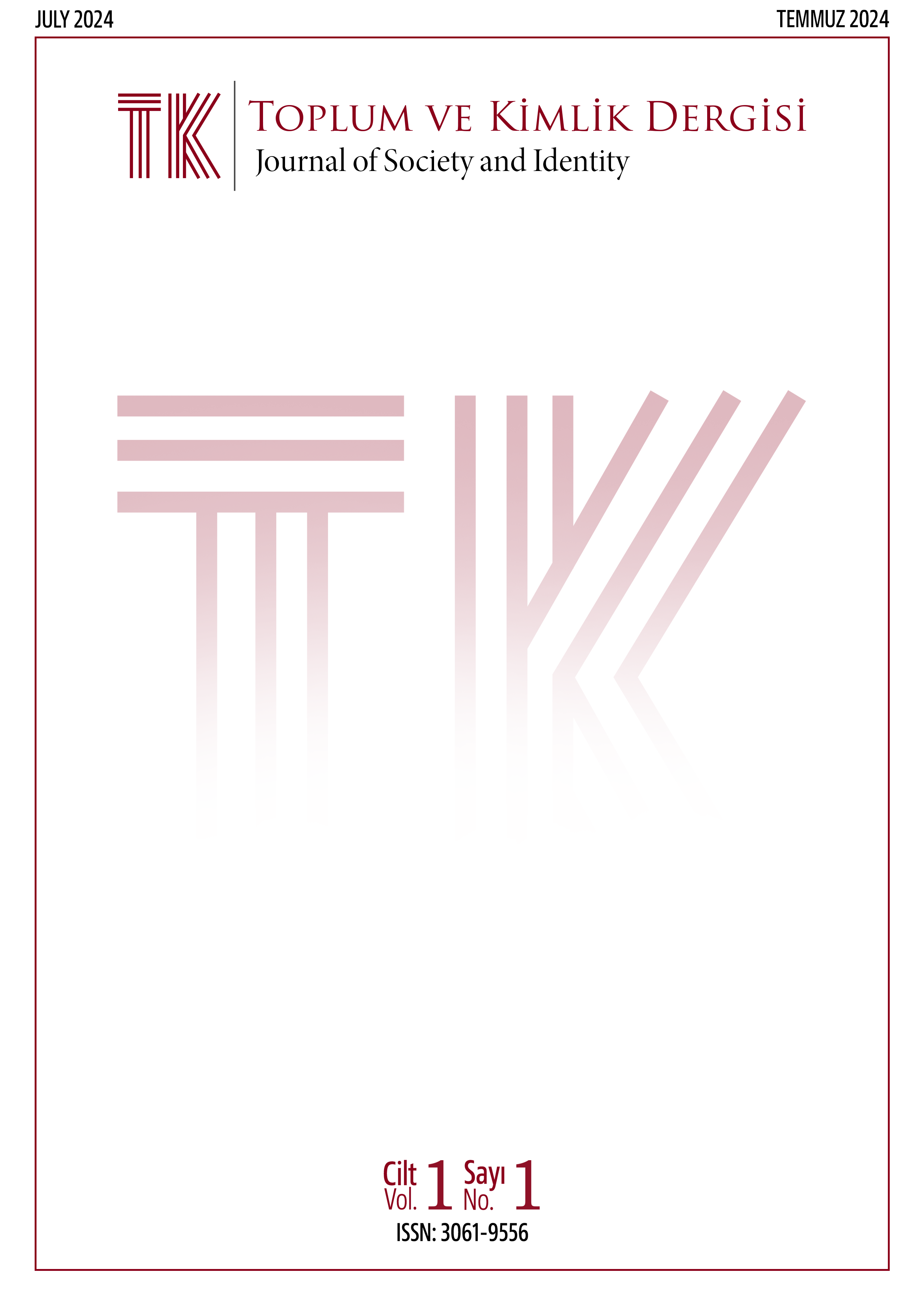Plaster of Paris/Chalkware Figurines: Period Showcase Objects in Turkish Houses
DOI:
https://doi.org/10.5281/zenodo.13127895Keywords:
Plaster figurines, Chalkware figurines, German figurines, Italian figurines, Showcases in Turkish housesAbstract
Until the establishment of the Republic, the upper layers of Turkish society were closely interested in European culture, life, art and literature, especially French. With the disappearance of many traditions such as eating on the floor or the change in social communication patterns, dining tables and chairs, display cases and sideboards, bedside tables for dining rooms, bedrooms and wardrobes began to settle in residences. Between the 1970s and 1990s, plaster figurines with human and animal figures, i.e. figurines, mostly bearing traces of pastoral, religious or simple life, were exhibited in the windows of many houses in Turkey, and were a symbol dominating domestic decoration for a period with their vibrant colors. The places where immigrants, who produce and sell trinkets, are in majority, are the USA, Germany, and England, and around Europe. These trinkets, which are known to come especially from Italy, England, USA and Germany, have become indispensable and encountered objects in decoration. The study, as a first in terms of previous researches, deals with the production stages of these works, their relevant history in terms of intercultural and social factors is included, and original information about their physical structures and prominent artists is inspected. Also in the study, the place and importance of these objects in Turkish houses, their artistic qualities, origins and some features related to Turkey were discussed, and it was a priority to give information to the literature about the figurines that gained antique value because they were no longer produced.
Keywords: Plaste figurines, Chalkware figurines, German figurines, Italian figurines,
showcases in Turkish houses.
References
Ceyhan, G. Türkiye’de Konut İç Mekan ve Donatılarında Değişim ve Süreklilik (Doctoral dissertation, Fen Bilimleri Enstitüsü, İstanbul Teknik Üniversitesi.
Colpi, T. (1991). The Italian factor: the Italian community in Gret Britain. Mainstream Publishing
Çetinkaya, E. (2012). 1930’lardan 1970’lere Türkiye’nin Gündelik Hayatında Yeni Bir Toplumsallaşma Aracı Olarak Radyo. Kültür ve İletişim, 15(29), 37-72.
Kurt, S. (2021). Haneden ev haline:“Türk evi" nde mimari, düzenleme, pratik (Vol. 2987). İletişim Yayınları.
Demirarslan, D. (2017). 19. Yüzyıldan Cumhuriyet Dönemine Türk Mobilya Sanatı ve Mobilya Üretiminin Gelişimi. Electronic Turkish Studies, 12(29).
Emiroğlu, K. (2014). Gündelik hayatımızın tarihi. İstanbul: Türkiye İş Bankası Kültür Yayınları.
O’Banion, S., & Cole, T. (2011). Speaking with the Artist: A Holistic Approach to Preserving Art. ANAGPIC http://resources.culturalheritage.org/anagpic-student-papers/wp-content/uploads/sites/11/2020/04/anagpic2011_Cole_OBanion_paper.pdf
Promey, Sally M. "Chalkware, Plaster, Plaster of Paris." Medium Study. In Conversations: An Online Journal of the Center for the Study of Material and Visual Cultures of Religion (2014). doi:10.22332/con.mst.2014.1 https://mavcor.yale.edu/sites/default/files/article_pdf/promey_sally_medium_study.pdf
Cavaioli, F. J. (1999). Randolph Rogers and the Columbus Doors. Italian Americana, 17(1), 8-13.
Sensi-Isolani, P. A. (1990). Italian image makers in France, England, and the United States. In Italian Americans Celebrate Life, the Arts and Popular Culture. Selected Essays from the 22nd Annual Conference of the American Italian Historical Association, New York, AIHA (pp. 95-113).
Ulukütük, M. E. (2010). Türkiye’de Cumhuriyet Dönemi Seramik (Master's thesis, Afyon Kocatepe Üniversitesi, Sosyal Bilimler Enstitüsü).
Yard, N. (2003). Sculpture. Design. Vol. 39, Iss. 8, (Feb 1, 1938): 4
Downloads
Published
How to Cite
Issue
Section
License
Copyright (c) 2024 Seda Demir

This work is licensed under a Creative Commons Attribution 4.0 International License.







